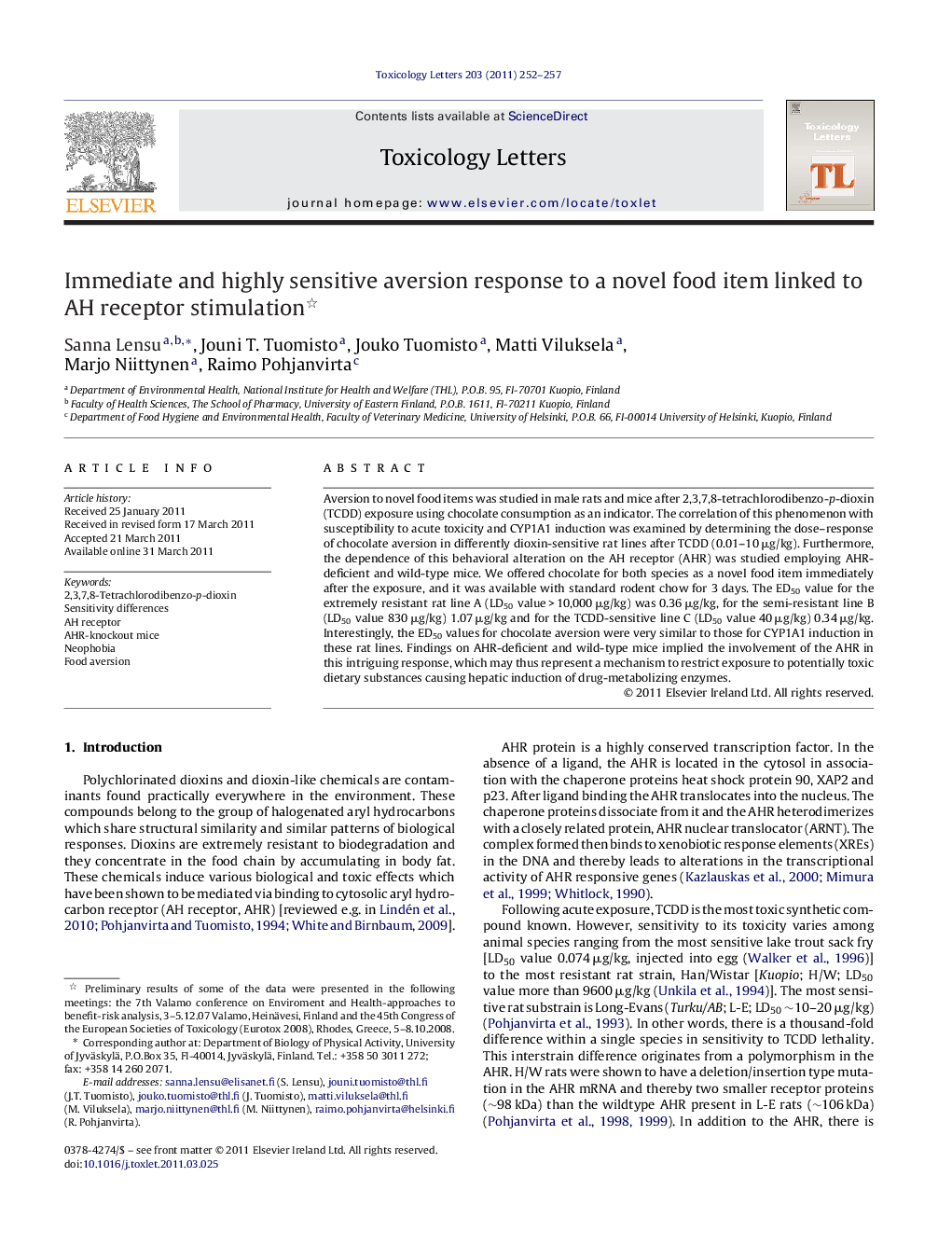| Article ID | Journal | Published Year | Pages | File Type |
|---|---|---|---|---|
| 2600001 | Toxicology Letters | 2011 | 6 Pages |
Aversion to novel food items was studied in male rats and mice after 2,3,7,8-tetrachlorodibenzo-p-dioxin (TCDD) exposure using chocolate consumption as an indicator. The correlation of this phenomenon with susceptibility to acute toxicity and CYP1A1 induction was examined by determining the dose–response of chocolate aversion in differently dioxin-sensitive rat lines after TCDD (0.01–10 μg/kg). Furthermore, the dependence of this behavioral alteration on the AH receptor (AHR) was studied employing AHR-deficient and wild-type mice. We offered chocolate for both species as a novel food item immediately after the exposure, and it was available with standard rodent chow for 3 days. The ED50 value for the extremely resistant rat line A (LD50 value > 10,000 μg/kg) was 0.36 μg/kg, for the semi-resistant line B (LD50 value 830 μg/kg) 1.07 μg/kg and for the TCDD-sensitive line C (LD50 value 40 μg/kg) 0.34 μg/kg. Interestingly, the ED50 values for chocolate aversion were very similar to those for CYP1A1 induction in these rat lines. Findings on AHR-deficient and wild-type mice implied the involvement of the AHR in this intriguing response, which may thus represent a mechanism to restrict exposure to potentially toxic dietary substances causing hepatic induction of drug-metabolizing enzymes.
Graphical abstractFigure optionsDownload full-size imageDownload as PowerPoint slideHighlights► Extremely low doses of TCDD induced rapid aversion of a novel food item. ► Aversion emerged both in rats and mice. ► ED50 values were very similar for differently TCDD sensitive rats: 0.34–1.07 μg/kg. ► The aversion seems to be mediated by the AHR: it was not detected in Ahr-null mice. ► This effect may represent a way to restrict exposure to toxic dietary substances.
